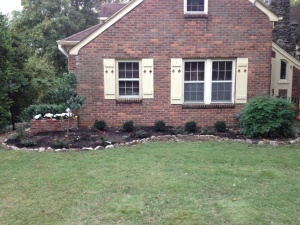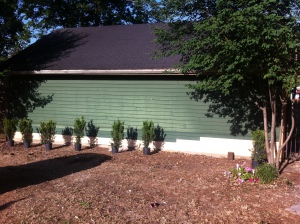So you’ve installed your plants like a pro in Step 5? Now you’re ready to keep them alive!
Wanna know the secret of healthy plants? Give them love and attention. Oh, and Right Plant in the Right Place.
It’s critical that you physically look at your plants weekly. Sometimes daily during the hot, summer growing season when conditions can change quickly.
Most garden failure occurs when people go out of town. Or just take a long weekend. You come home and your plants are cooked. They’re brown and crispy, dead, toast. Firewood.
Before you leave town and your plants home alone, make sure to do these three things.
1. Keep the soil weed free and grass free underneath the drip line of your freshly planted trees and shrubs.
2. Use organic mulch like pine straw, pine bark, or hardwood mulch to keep the root balls moist. Moist equals life.
3. Soak the plants with a garden hose. Water is crucial. How to Water Right. Have you bought a hose yet? How to Select a Hose.
Have you mulched and watered correctly? Congratualations! Check out Step 7.






